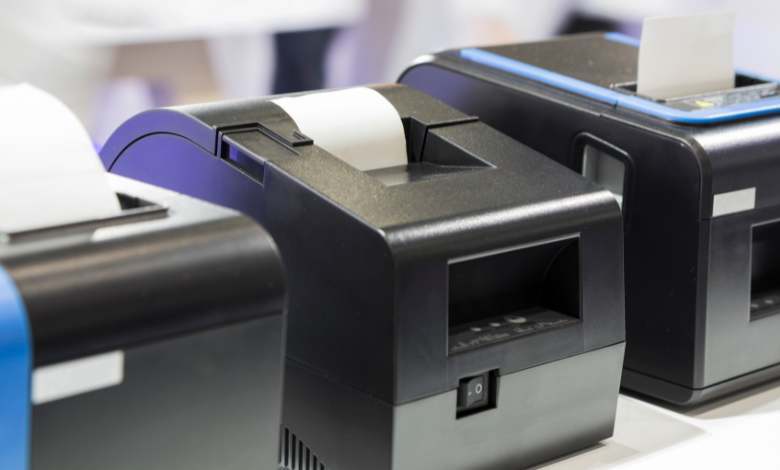 If you’ve ever wondered about the devices responsible for producing those receipts at the grocery store or the shipping labels on your online orders, you’ve probably encountered thermal printers. In this article, we’ll dive deep into the world of thermal printers, exploring what they are, how they work, and their benefits and disadvantages. We are so dependent on thermal printers on a daily basis, so what is a thermal printer?
If you’ve ever wondered about the devices responsible for producing those receipts at the grocery store or the shipping labels on your online orders, you’ve probably encountered thermal printers. In this article, we’ll dive deep into the world of thermal printers, exploring what they are, how they work, and their benefits and disadvantages. We are so dependent on thermal printers on a daily basis, so what is a thermal printer?
-
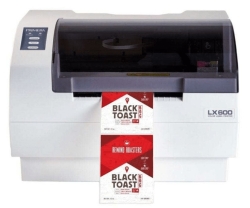 Primera LX600 Color Label Printer SKU: LX600$1,995.00
Primera LX600 Color Label Printer SKU: LX600$1,995.00
FREE SHIPPING over $199*
Orders before 12PM EST usually Ship Same Business Day - Product on sale
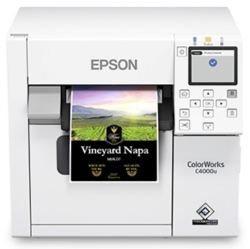 Epson C4000/CW-C4000 ColorWorks Inkjet Label Printer (Gloss) SKU: C31CK03A9991Original price was: $2,399.00.$2,199.00Current price is: $2,199.00.
Epson C4000/CW-C4000 ColorWorks Inkjet Label Printer (Gloss) SKU: C31CK03A9991Original price was: $2,399.00.$2,199.00Current price is: $2,199.00.
FREE SHIPPING over $199*
Orders before 12PM EST usually Ship Same Business Day -
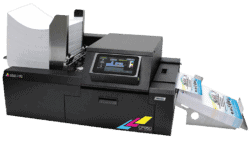 Afinia CP950 Envelope Packaging and Box Color Label Printer SKU: 35256$18,995.00
Afinia CP950 Envelope Packaging and Box Color Label Printer SKU: 35256$18,995.00
FREE SHIPPING over $199*
Orders before 12PM EST usually Ship Same Business Day
How Does a Thermal Printer Work?
To understand what a thermal printer is, we first need to grasp the basic principles behind its operation. In thermal printers, images are produced by heating paper or other thermally sensitive material. They are widely used in various applications due to their simplicity, speed, and reliability. Let’s explore the two primary types of thermal printing technologies: direct thermal printing and thermal transfer printing.
Direct Thermal Printing: How Does It Work?
Direct thermal printing technology is more straightforward than thermal transfer printing technology. The principle of the device is that certain materials change color with heat, such as thermal paper or thermal labels. By making contact with the thermal paper, a thermal print head in direct thermal printers applies heat to specific regions of the paper. Heat has the effect of darkening, producing the desired image or text.
The speed of direct thermal printing is one of its major advantages. These printers can produce high-quality prints quickly, making them ideal for applications like point-of-sale receipts, shipping labels, and wristbands. Business owners who need efficient and cost-effective printing solutions can choose these low-cost, low-maintenance printers.
Thermal Transfer Printing: How Does It Work?
Direct thermal printing differs from thermal transfer printing in that it is a bit more complex, but it provides some advantages over the former. Thermal transfer printing requires wax ribbons, resin ribbons, or combinations of the two, as well as thermal printheads. When the print head applies heat to the ribbon, it transfers the ink onto the media, whether it’s paper, plastic, or fabric.
The key advantage of thermal transfer printing is its durability. Since the ink is transferred onto the medium rather than heating it directly, the resulting prints are resistant to fading, water, and other environmental factors. This makes thermal transfer printers suitable for applications where the longevity of the printed material, such as product labels, barcodes, and ID badges, is crucial.
-
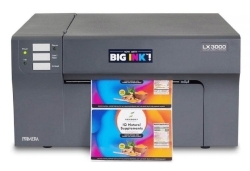 Primera LX3000 Color Label Printer with Big Ink, Pigment Ink SKU: LX3000-pigment$3,195.00
Primera LX3000 Color Label Printer with Big Ink, Pigment Ink SKU: LX3000-pigment$3,195.00
FREE SHIPPING over $199*
Orders before 12PM EST usually Ship Same Business Day - Product on sale
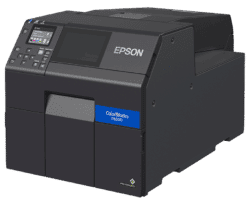 Epson ColorWorks CW-C6000A Matte Color Inkjet Label Printer with Auto Cutter SKU: C31CH76A9981Original price was: $2,899.00.$2,699.00Current price is: $2,699.00.
Epson ColorWorks CW-C6000A Matte Color Inkjet Label Printer with Auto Cutter SKU: C31CH76A9981Original price was: $2,899.00.$2,699.00Current price is: $2,699.00.
FREE SHIPPING over $199*
Orders before 12PM EST usually Ship Same Business Day -
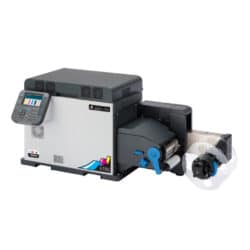 Afinia LT5C CMYK + White Label Printer SKU: 36138$12,495.00
Afinia LT5C CMYK + White Label Printer SKU: 36138$12,495.00
FREE SHIPPING over $199*
Orders before 12PM EST usually Ship Same Business Day
The Benefits of Thermal Printers
Now that we’ve covered the basics of how thermal printers work, let’s explore why they are so widely used and appreciated in various industries.
- High-Speed Printing: Direct thermal printers, especially, have an impressive printing speed, which is one of their greatest advantages. Businesses that rely on quick transaction processing, such as retail stores, greatly benefit from this feature.
- Cost-Efficiency: Thermal printers are known for their cost-effectiveness. They require minimal maintenance, have lower operational costs compared to inkjet or laser printers, and don’t require ink or toner cartridges.
- Compact Size: The size of thermal printers makes them ideal for small businesses that may not have a lot of counter space or working space.
- Versatility: They can print on various media types, including paper, labels, and synthetic materials, making them adaptable to a wide range of applications.
- Durability: As mentioned earlier, thermal transfer printers produce durable prints that can withstand harsh conditions, making them ideal for outdoor signage and industrial labeling.
- Ease of Use: Thermal printers are user-friendly, with simple paper and ribbon replacement procedures, reducing downtime and ensuring smooth operations.
- Environmental Friendliness: Since thermal printers don’t require ink or toner, they are considered more environmentally friendly and produce less waste.
Disadvantages Of Thermal Printers
It is true that thermal printers have a number of advantages, but they also have a number of disadvantages. In order to understand some of the disadvantages of these devices, let’s take a closer look at some of them.
- Sensitivity to Heat: Ironically, the same heat used in thermal printing can be a disadvantage. Direct thermal prints can fade or darken when exposed to heat, sunlight, or humidity, which limits their use in specific applications.
- Limited Color Options: Monochrome printing is the primary application for thermal printers. While some models offer limited color options through special ribbons, they are not suitable for high-quality color printing.
- Media Compatibility: Thermal printers require special thermal paper or labels. Whether this is a problem depends on the kind of media you are printing on.
- Initial Cost: Although thermal printers are cost-effective in the long run, their initial purchase price can be higher than some other types of printers.
- Maintenance Requirements: While thermal printers generally require less maintenance than inkjet or laser printers, they still need regular cleaning and occasional replacement of printheads and other parts.
- Noise Levels: When operating a thermal printer, some printers can be loud, which may pose a problem in a quiet office.
What Is A Thermal Printer Used For?
Thermal printers find application in a wide range of industries and scenarios due to their efficiency and versatility. Here, we will explore some common uses of thermal printers, shedding light on their significance in various fields.
- Retail and Point-of-Sale (POS) Systems: Retailers use thermal printers to generate receipts for customers quickly. The high-speed printing capability ensures that long checkout lines move smoothly. Additionally, thermal printers are employed for printing barcodes, price tags, and labels, making inventory management more efficient.
- Shipping and Logistics: In the world of e-commerce and shipping, thermal printers are indispensable. In addition to shipping labels and packing slips, address labels are also created with them. Important shipping information will remain legible throughout the delivery process thanks to the durability of thermal transfer prints.
- Healthcare: Hospitals and healthcare facilities use thermal printers for printing patient wristbands, labels for medication, and various medical reports. The reliability of thermal printers is crucial in this sector, where accuracy and safety are paramount.
- Manufacturing: Manufacturers rely on thermal printers for labeling products, parts, and packaging. The ability to produce durable, long-lasting labels is crucial for tracking items throughout the supply chain.
- Warehousing: In warehouses, thermal printers play a crucial role in generating barcoded labels for inventory management and tracking. They help streamline operations and reduce errors.
- Food Service Industry: In restaurants, thermal printers are used in the kitchen to print orders, ensuring that chefs receive clear instructions for preparing meals. They are also used for printing customer receipts in the dining area.
- Ticketing and Events: Thermal printers are employed for printing tickets to concerts, sports events, and public transportation. They ensure smooth ticketing processes, even during peak demand, with their speed and reliability.
- Government and Public Services: Government agencies use thermal printers to produce various documents, including ID cards, driver’s licenses, and parking permits. The durability of thermal prints is especially important for such applications.
-
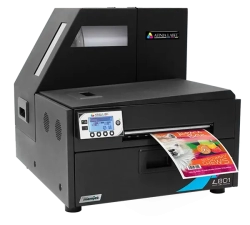 Afinia L801 Plus Commercial Color Label Printer SKU: 32498$8,495.00
Afinia L801 Plus Commercial Color Label Printer SKU: 32498$8,495.00
FREE SHIPPING over $199*
Orders before 12PM EST usually Ship Same Business Day -
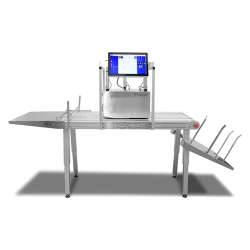 Trojan T3 OPX Over Printer Wide-Format Direct-to-Package Printing SKU: 43160000$26,330.00
Trojan T3 OPX Over Printer Wide-Format Direct-to-Package Printing SKU: 43160000$26,330.00
FREE SHIPPING over $199*
Orders before 12PM EST usually Ship Same Business Day -
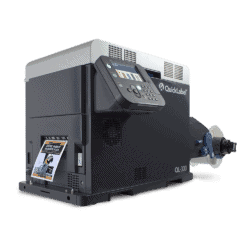 Quick Label QL-300 (120V) Toner CMYK Color Label Printer SKU: 1003-0000002$9,495.00
Quick Label QL-300 (120V) Toner CMYK Color Label Printer SKU: 1003-0000002$9,495.00
FREE SHIPPING over $199*
Orders before 12PM EST usually Ship Same Business Day
What is the Difference Between Inkjet and Thermal Printers?
The importance of understanding the differences between inkjet and thermal printers cannot be overstated when choosing the right printer for your needs. Let’s take a closer look at each type of printer and their respective advantages and disadvantages.
Inkjet Printers
Inkjet printers are among the most common types of printers in homes and offices. A spray printer sprays tiny droplets of ink onto paper or another medium to produce text and images. An inkjet printer has the following key characteristics:
- Color Printing: Color prints produced by inkjet printers are well known to be high-quality. As a result, they are suitable for tasks such as photo printing and graphic design that require vibrant and detailed graphics.
- Versatility: Unlike laser printers, inkjet printers are capable of printing on regular paper, glossy photo paper, and label and sticker paper.
- Affordable Initial Cost: There is generally a lower initial cost with inkjet printers as opposed to thermal printers.
- Slower Printing Speed: The print speed of inkjet printers is usually less than that of thermal printers, especially in terms of high-volume printing.
- Maintenance Requirements: They may require more maintenance due to issues like clogged printheads, which can affect print quality.
Thermal Printers
As we’ve explored earlier, thermal printers rely on heat to produce images on thermal-sensitive media. Here’s what sets them apart:
- Monochrome Printing: Monochrome printing is primarily done with thermal printers. While some models offer limited color options through special ribbons, they are not designed for high-quality color printing.
- High-Speed Printing: Thermal printers, especially direct thermal ones, excel in terms of speed. They are ideal for tasks that require fast and efficient printing, such as receipts and shipping labels.
- Durable Prints: Thermal transfer prints resist fading, water, and other environmental factors, making them ideal for applications requiring long print lifespans.
- Cost-Efficiency: Thermal printers are known for their cost-effectiveness in the long run. Ink cartridges and toner cartridges are not required, so they have lower operating costs.
- Specialized Media: Thermal printers require thermal paper or labels, which can limit their versatility compared to inkjet printers.
- Limited Color Options: Thermal printers are not suitable for high-quality color printing, making them less suitable for tasks that require vibrant graphics.
- Compact Size: Compact models are well suited for businesses with limited space since they are space-saving and compact.
How to Choose the Right Thermal Label Printer for Your Needs
When selecting a thermal label printer, it is important to consider several factors to ensure that it meets your specific needs. Making an informed decision is easier with this guide:
- Printing Technology: Determining whether thermal transfer or direct thermal printing is required. Direct thermal is suitable for applications like receipts and shipping labels, while thermal transfer offers more durable prints for labels and tags that need to withstand harsh conditions.
- Printing Speed: Don’t forget to consider how much printing you’ll be doing. If you need high-speed printing, look for a thermal printer with the appropriate speed rating.
- Resolution: The quality of the output is determined by the print resolution. Higher resolution is essential for tasks that require clear and sharp text or barcodes.
- Media Compatibility: Check whether the printer can handle the type and size of media you plan to use, whether it’s thermal paper, labels, or tags.
- Connectivity Options: If you wish to integrate the printer with your existing systems, it must have USB, Ethernet, or wireless connectivity options.
- Durability: Consider the environmental conditions where the printer will be used. Some thermal printers are built to withstand dust, moisture, and extreme temperatures.
- Cost of Consumables: Take into account the ongoing costs of consumables, such as thermal ribbons or paper rolls, as they can add up over time.
- Software Compatibility: Ensure the printer can be used with the software that you intend to use to manage your printing tasks and print labels.
- Brand and Model: Make sure you choose reputable brands and models recognized for their quality and reliability.
- User Reviews: Read user reviews and seek recommendations from others in your industry who have similar printing needs.
-
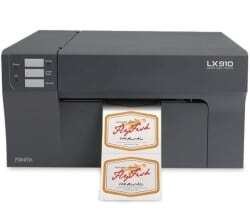 Primera LX910 Color Label Printer SKU: LX910$2,749.00
Primera LX910 Color Label Printer SKU: LX910$2,749.00
FREE SHIPPING over $199*
Orders before 12PM EST usually Ship Same Business Day -
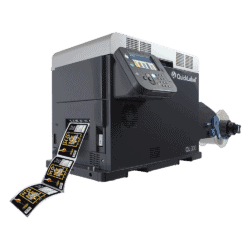 Quick Label QL-300s (120V) Toner CMYK + White Color Label Printer SKU: 1003-0000004$12,495.00
Quick Label QL-300s (120V) Toner CMYK + White Color Label Printer SKU: 1003-0000004$12,495.00
FREE SHIPPING over $199*
Orders before 12PM EST usually Ship Same Business Day -
 Epson ColorWorks C3500 Inkjet Color Label Printer SKU: C31CD54011 GTIN: 814420980046$2,199.00
Epson ColorWorks C3500 Inkjet Color Label Printer SKU: C31CD54011 GTIN: 814420980046$2,199.00
FREE SHIPPING over $199*
Orders before 12PM EST usually Ship Same Business Day
FAQs
Let’s address some frequently asked questions about thermal printers to provide you with a more comprehensive understanding of this technology.
Are Thermal Printer Labels Waterproof?
Thermal printer labels, specifically those created using thermal transfer printing, offer a degree of resistance to water and moisture. Prints created with thermal transfer ink are more durable and won’t smudge or run when exposed to water. Unlike regular inkjet printers, the degree of waterproofing can vary depending on the type of label material and the quality of the thermal transfer ribbon used. For critical applications where waterproof labels are essential, it’s advisable to choose specialized thermal labels explicitly designed for water resistance.
Can Thermal Printers Print Photos?
Thermal printers are primarily designed for monochrome printing, making them unsuitable for high-quality color photo printing. While some thermal printers offer limited color printing capabilities using special ribbons, the results are not comparable to the color accuracy and detail achieved by inkjet or dye-sublimation photo printers. If your printing needs involve high-quality photo prints, it’s recommended to use dedicated photo printers for the best results.
When is a Thermal Printer Used?
There is a wide range of applications for thermal printers across a wide range of industries. Some common scenarios where thermal printers excel include printing receipts at retail stores, generating shipping labels for e-commerce orders, creating labels for products and inventory management, producing medical wristbands and labels in healthcare settings, and printing tickets for events and transportation services. Their speed, cost-efficiency, and durability make thermal printers ideal for tasks that require fast and reliable printing.
Is There a Thermal Printer that Works with Chromebooks?
Yes, there are thermal printers available that are compatible with Chromebooks. Many modern thermal printers come with USB, Wi-Fi, or Bluetooth connectivity options, making them compatible with a wide range of devices, including Chromebooks. To use a thermal printer with your Chromebook, ensure that the printer has the necessary connectivity features and check for any specific setup instructions provided by the manufacturer. Chrome OS typically supports a variety of printers, including thermal ones, without the need for additional drivers.
Who Uses Thermal Printers?
Professionals and industries use thermal printers for a variety of purposes. Some of the primary users of thermal printers include:
- Retailers for printing receipts, price tags, and labels.
- A software program that generates shipping labels and packing slips for e-commerce businesses.
- Healthcare facilities for printing patient wristbands and medical labels.
- Manufacturing companies for labeling products and parts.
- Warehouses for inventory management and labeling.
- Restaurants for printing kitchen orders and customer receipts.
- Event organizers for ticketing and admission.
- Government agencies for producing IDs and permits.
All types of businesses and organizations benefit from the versatility of thermal printers.
Why Consider Thermal Printing?
Thermal printing offers several compelling advantages, including:
- High-speed printing for efficient and rapid output.
- Cost-effectiveness due to lower operational costs.
- It has high durability, including water resistance, fade resistance, and environmental resistance.
- Compact and space-efficient designs.
- User-friendly operation and minimal maintenance requirements.
- Compatibility with various media types, including labels and thermal paper.
Businesses seeking reliable and efficient printing solutions will find thermal printing to be an attractive choice.
Conclusion
Throughout this article, we have examined thermal printers in detail, learning what they are, how they work, and the advantages they offer. Thermal printers, whether direct thermal or thermal transfer, have become an integral part of various industries, offering speed, cost-efficiency, and durability.
We’ve also discussed the differences between thermal and inkjet printers, highlighting the unique features and applications of each type. The ability to differentiate between these types of printers is crucial to making an informed decision when choosing a printer for a specific purpose.
Additionally, we’ve provided guidance on selecting the right thermal label printer based on factors such as printing technology, speed, resolution, media compatibility, durability, and cost considerations.
To address common questions, we’ve covered topics like the waterproofness of thermal printer labels, the suitability of thermal printers for photo printing, and their wide range of applications.
Finally, we’ve explored who uses thermal printers and why businesses and organizations should consider adopting thermal printing technology. The versatility, reliability, and cost-effectiveness of thermal printers continue to make them an essential tool in today’s fast-paced and demanding printing environments. The thermal printer and regular color label printer can be explained better if you contact TCS Digital Solutions.


